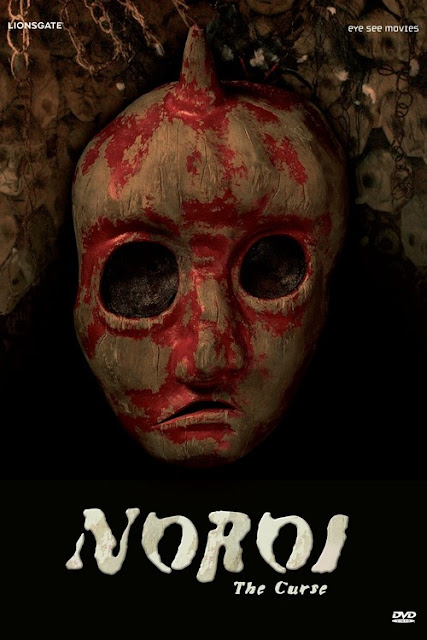Follow a Terrifying Investigation of the Supernatural in Noroi (2005)
For some, the horror subgenre of found footage has become the bane of good horror filmmaking. Much like the slasher and zombie subgenres in previous decades, found footage has become the subgenre of choice for aspiring horror filmmakers who have very small production budgets at their disposal. Of course, the talents of such filmmakers vary and while some of them have produced found footage films of high entertainment value, many more have made films that are simply average, below average, or so below average that they are unwatchable.
Even though some found footage narrative conventions have become clichéd due to their recent overuse, I still think that this subgenre has the potential to tell stories that other subgenres can't. As the name suggests, "found footage" is just that--footage that was shot by one person or group and found by another. With so many forms of video technology available these days, the footage could come from anywhere: home video, security cameras, news footage, live Internet video feed, and so on. In other words, wherever a video camera can be found, a found footage horror movie has the potential to be made.
In the case of Noroi, the found footage in question is a documentary that was completed by a journalist two days before he went missing. Unlike most found footage films, Noroi is shot like a documentary with very few "shaky cam" shots. What also sets this film apart from others in its subgenre is the span of time it covers: most found footage films cover events that occur within a few hours or a few days, but Noroi examines events that occur over the course of several months. Such differences result in a different kind of horror movie, the kind that foregoes jump shocks and excessive gore in exchange for an eerie, creeping mood that stays with you long after the film ends. Read on for my complete review.
Noroi is about the last documentary made by Masafumi Kobayashi (Jin Muraki), a paranormal investigator, and the events that led up to his disappearance. Kobayashi's documentary tracked a handful of what initially appear to be separate incidents of supernatural activity (EVP recordings, psychic visions, spirit photography, etc.) but they all have connections to the sinister occult practices of Shimokage, an abandoned village located in Japan's Nagano Prefecture. The footage in the documentary includes interview footage shot by Kobayashi and his crew, along with footage from other Japanese TV shows about the paranormal and archival footage from 1977.
Noroi is a complex movie with a large number of characters and subplots. For the complete story to make sense, the viewer has to pay close attention to the video clips that are shown to identify clues--both spoken and unspoken--that tie each of the narrative threads together into a complete story. Furthermore, because most of the film's footage is shot like a documentary, it feels like you are watching a horror movie from the outside and looking inward. Almost all of the deaths that happen in the movie occur off the screen, so you'll never see a single scene where a victim is being stalked and attacked by some mysterious threat.
This is not to say that Noroi isn't scary at all; far from it. Director Kôji Shiraishi knows how to build a fragmented narrative that slowly converges into a whole and rewards viewers who are willing to put the pieces together in their minds as the film progresses to its conclusion. Noroi is not an example of cinematic shock, but a layered supernatural mystery that will make your skin crawl if you let it. That said, just because it doesn't feature much explicit violence or gore doesn't mean that Noroi is neither brutal nor gruesome.
Horror fans who love films that are loaded with high-intensity frights and bloodshed will be disappointed in Noroi because it is not that kind of film. However, horror fans who love a good mystery should see this movie, particularly the version that includes the alternate ending. That's the version I saw and I think that calling it an "alternate" is a misnomer; it's actually an extended ending that it delivers a chilling conclusion to Noroi's engrossing, intricate mystery.






What do you think of V/H/S?
ReplyDeleteI haven't seen it yet, but I so want to! Hopefully, I can get my hands on it soon; when I do, you can be sure that I'll be posting my review here.
DeleteLooking forward to read it! I am really into found footage lately, and as for me, V/H/S is the most curious example of the genre I've seen so far. Haven't seen Noroi, but now totally feel like checking it out! Thank you!
DeleteYou're welcome, Inese!
Delete